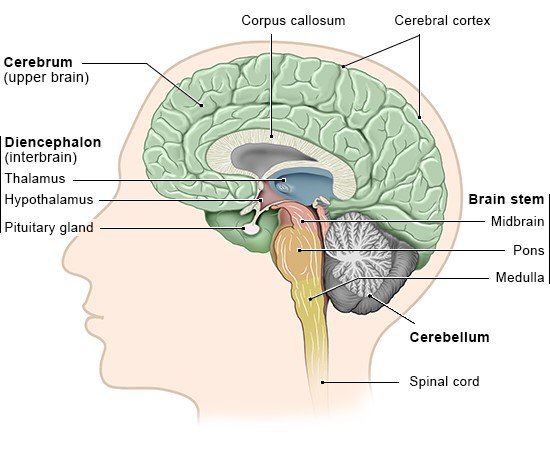How does the brain work?
The brain works like a big computer. It processes information that it receives from the senses and body, and sends messages back to the body. But the brain can do much more than a machine can: We think and experience emotions with our brain, and it is the root of human intelligence.
The human brain is roughly the size of two clenched fists and weighs about 1.5 kilograms. From the outside it looks a bit like a large walnut, with folds and crevices. Brain tissue is made up of about 100 billion nerve cells (neurons) and one trillion supporting cells that stabilize the tissue.
The brain is made up of various parts, each with its own functions:
- the cerebrum
- the diencephalon – including the thalamus, hypothalamus and pituitary gland
- the brain stem – including the midbrain, pons and medulla
- the cerebellum


